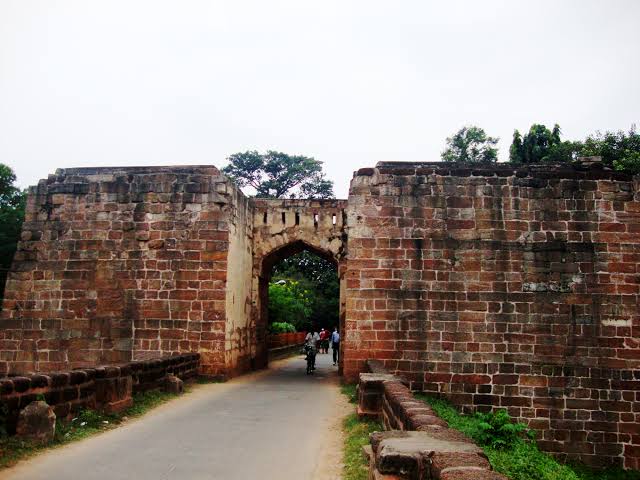On #WorldHeritageDay, a short thread on the Barabati Fort
Named for 12 batees or 240 bighas. Fort is obviously much smaller. Probably means the area marked for its upkeep or garrison.
No one knows its real date. However, Ananga Bhima Deva III did build a fort around 1235 (1/n)
Named for 12 batees or 240 bighas. Fort is obviously much smaller. Probably means the area marked for its upkeep or garrison.
No one knows its real date. However, Ananga Bhima Deva III did build a fort around 1235 (1/n)
Next mention we have is in Abul Fazl’s Ain e Akbari. He describes it as Raja Mukunda Deva’s palace with nine courtyards and an ancient temple.
In 1633, Brutton and Cartwright visited Cuttack & mention Shah Jahan’s governor residing there. Also describe its walls & moat (2/n)
In 1633, Brutton and Cartwright visited Cuttack & mention Shah Jahan’s governor residing there. Also describe its walls & moat (2/n)
Barabati passed from Mughals to the Nawabs of Bengal. Alivardi Khan lost it to the Marathas under Raghoji in 1751. Motte saw it in 1766 and describes it as garrisoned by 1500 infantry and 150 Sikh cavalry. He describes a layer of two walls with the moat (Gadkhai) outside (3/n)
British took Barabati in 1803 by bombing it from where St Joseph’s School now is. They initially used it as a garrison and then a prison for the Rajas of Khurda and Banki.
In 1828, Pakenham, the Collector, started dismantling the Fort for its stone (4/n)
In 1828, Pakenham, the Collector, started dismantling the Fort for its stone (4/n)
In 30 yrs, the Fort was completely gone. Its stones built the False Point Lighthouse and the Cantonment Road of Cuttack. Rate of purchase was 100 stones for 5 rupees.
Only things left were the Eastern Gateway, the Mughal mosque and the moat (5/n)
Only things left were the Eastern Gateway, the Mughal mosque and the moat (5/n)
The gate at the East was the main entrance. It had two tall towers at both sides and a twisting passageway inside which made an attack very difficult.
The mosque is probably Mughal, but we are again not sure. Almost certainly Cuttack& #39;s oldest mosque (6/n)
The mosque is probably Mughal, but we are again not sure. Almost certainly Cuttack& #39;s oldest mosque (6/n)
There is also a dargah of Shah Bukhari and a temple of Garh Chandi. The dargah is probably from the 18th century while the temple is very new. An old temple& #39;s remains were discovered during the excavations of 1989 but we do not know to whom it was dedicated. (7/n)
The British initially laid out tennis courts where Cuttack Club now is. Much of Satyabrata Stadium and Indoor Stadium areas was used to house a botanical garden. By 1840, a few bungalows were built near the mosque - brick with thatched roofs and a veranda. (8/n)
Soon the Cuttack Club came up in the 1870s. Few remnants of the Maratha arsenal could still be seen on its grounds till recently. At the same time, the moat was drained and its cladding stones removed. New bungalows were built to house Army officers of the Cantonment. (9/n)
The largest bungalow housed the judges of the Bihar and Orissa High Court who visited Cuttack on circuit. It then became the CJ& #39;s residence and is now the HC museum.
The Ring Road cut off the Gadkhai& #39;s link to Mahanadi and led to its stagnation. (10/n)
The Ring Road cut off the Gadkhai& #39;s link to Mahanadi and led to its stagnation. (10/n)
An ambitious project between @CMCCuttack and @ASIGoI now aims to restore the Fort by cleaning up the moat, creating a visitors& #39; centre and landscaping the excavated area. Wish them all the best! (11/11)

 Read on Twitter
Read on Twitter



